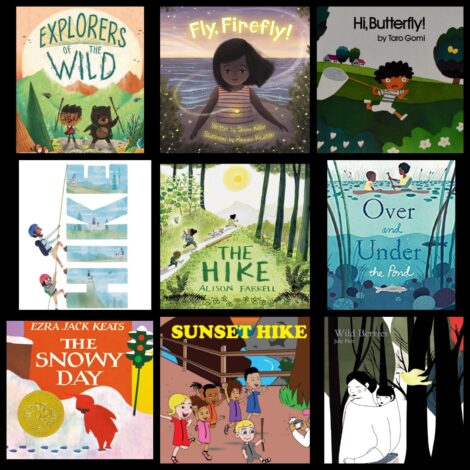9 Diverse Children’s Nature Books to Add to Your Collection
As parents, focused on being outdoors and immersing our children in nature, we often tend to bring the outside indoors through books. Books offer a way for our children to experience diverse aspects of nature they may not otherwise be exposed to and allow parents to introduce new experiences to their children in a safe environment. In other words, nature books are an amazing addition to any household, even for families that aren’t always able to get outside. The majority of nature-focused children's books may share the diversity found in nature, but fail to portray the diverse families that enjoy the great outdoors. Representation matters. Here are nine diverse children's nature books, with each featuring children of color as a main character.
This list is by far not a comprehensive one. There are other amazing inclusive nature books for children, but these offer a great place to start in creating more diversity on your bookshelf.
Explorers of the Wild, Cale Atkinson
Age Range: 4-8 year-olds Follow the adventures of a boy and a bear as they explore the nature around them alone and then, once they accidentally meet, together. If you enjoy this book, Atkinson has written and illustrated a couple other children’s books with a nature-theme as well.
Fly, Firefly! - Shana Keller
Age Range: 5-7 year-olds A child and her aunt witness a firefly and mistake the sea’s bioluminescence for other fireflies and dive into the water. This book follows the child and her aunt as they help save the misguided firefly.
Hi, Butterfly - Taro Gomi
Age Range: 2-4 year-olds Follow the adventures of a boy as he tries to capture a yellow butterfly and finds many other yellow butterfly-looking objects along the way.
Hike - Peter Oswald
Age Range: 4-8 year-olds This picture book follows a father and child as they enjoy a hiking adventure. While the book has no printed words, the illustrations provide a great depiction of getting ready for a hike, the actual hiking activities, and the return home.
The Hike - by Alison Farrell
Age Range: 3-5 year-olds Join three friends as they set off on a hiking adventure together. The book follows their experiences but also details some of the plants and animals along their path.
Over and Under the Pond- by Kate Messner
Age Range: 5-8 year-olds As a child and her mother sit in a boat on a pond, they see and talk about what is above and below the pond’s surface. If you enjoy this fact-filled book, Messner has several other nature-focused books in this same style, including Over and Under the Rainforest, Over and Under the Snow, and Up in the Garden and Down in the Dirt.
Snowy Day - by Ezra Jack Keats
Age Range: 2-5 year-olds This award-winning classic 1963 children’s book follows a young boy as he explores and experiences his neighborhood after it snows. Check out this book review for The Snowy Day.
Sunset Hike - by Dineo Dowd
Age Range: 4-8 year-olds This book written by a Hike it Baby community and board member follows young friends as they experience a sunset hike together. One friend is unsure of many things and one friend is quick to help her overcome these fears. If you enjoy this book, Dowd has other wonderful nature-centered children’s books you can check out, including Spring Hike, Adventure Day, and Summer Camping. Check out this book review of Adventure Day.
Wild Berries - by Julie Flett
Age Range: 4-8 year-olds A young boy and his grandma spend the day picking blueberries, while also encountering and enjoying the wildlife around them. Flett has written many children’s books with nature woven in, so if you enjoy this one be sure to check out her others as well.
Looking for some other children's books? These lists may be helpful. Share your favorite diverse children's nature books in the comments.
Books to Help Your Kids Engage with Nature
Explore the National Parks through Books
"Take it Outside" with Good Books
ABOUT HIKE IT BABY
Hike it Baby is a 501(c)(3) non-profit organization dedicated to getting families outdoors and on trails across the U.S. and internationally, supporting, educating and inspiring families through their more than 300 communities across North America. Since its grassroots inception in 2013 in Portland, Oregon, Hike it Baby is now a growing community of 270,000 families and 500 volunteer branch ambassadors hosting more than 1,600 hikes per month. More information, as well as daily hike schedules, can be found at HikeitBaby.com, Facebook, YouTube, Pinterest, and Instagram.
This post contains affiliate links. If you purchase through one of those links you won't pay more but Hike it Baby will get a small commission which helps us further our mission. Thanks!
Related Content






Comments